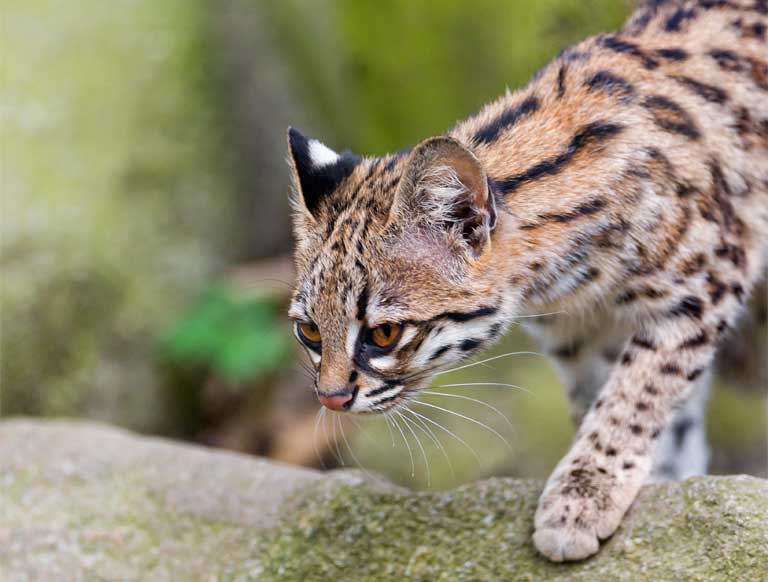- Jaguars, parrots, spectacled bears, giant river otters, turtles, and thousands of other species, already under pressure from Amazon habitat loss and development, are now threatened by a growing wave of animal trafficking.
- Uncounted numbers of animals, and animal parts, are smuggled into the U.S. annually, with America’s 130 US Fish and Wildlife Service agents overwhelmed by the millions of tons of imported goods entering the nation.
- As rainforests are drained of wildlife by traffickers — sometimes with the aid of indigenous hunters armed with modern weapons — indigenous people are drawn away from their traditional cultures into modern cash economies.

Wildlife trafficking casts a toxic net of negative impacts across the entire landscape it exhausts.
The nightmarish media imagery emerging from the poaching battlefield of Africa has set the horrific tone for public understanding of Earth’s accelerating Sixth Extinction Event: an obliterating trifecta of climate change, habitat loss, and poaching for foreign and domestic consumption and the pet trade.
Now Latin America — home to the world’s last uncontacted peoples, the planet’s carbon-trapping Amazonian lungs, and a breathtaking diversity of species — is emerging as another epicenter for criminal trafficking networks feeding the global black market in exotic animals.
Latin America’s trafficking woes have largely gone unnoticed so far, maybe due to its other pressing environmental concerns: rapid deforestation, dam building, oil extraction, mining and illegal incursions into protected areas.
But the destruction of the region’s wildlife is ongoing and accelerating.
The trafficking onslaught in Latin America is following the same pervasive patterns seen in Africa: it is partly driven by Chinese money, Chinese extractive industries, and the unappeasable Chinese market for “traditional medicines,” dietary delicacies and other wildlife uses. It is also facilitated by endemically corrupt Latin American officials; weak, loophole-rife laws; and indifferent enforcement. A vigorous, and largely publically condoned, domestic wildlife trade adds to the devastation.

Meanwhile organized crime, embodied in Latin America’s notoriously powerful drug cartels, has recently recognized wildlife trafficking for the goldmine it is: a lucrative market whose monetary potential rivals that of narcotics, weapons and human slavery.
Follow the (lack of) money
Elitist Chinese consumers and criminal syndicates aren’t the only ones to blame for the escalating crisis: much of the demand for wildlife trafficked out of Latin America comes from the United States.
A study by Defenders of Wildlife released just last month identifies the five most frequently used trade routes for illegal wildlife shipments entering the U.S. from Latin America: Mexico to El Paso, Texas; Haiti to Miami, Florida; Mexico to San Diego, California; Mexico to Louisville, Kentucky; and the Bahamas to Miami. Wildlife trafficked through these points of export/import originate in habitats hundreds or even thousands of miles distant in the Amazon basin, the Andes and across Latin America.
There are 328 recognized ports of entry into the U.S., but only 18 American cities are designated as intake ports for legal wildlife shipments and staffed by inspectors with the U.S. Fish & Wildlife Service. Of these only three (Los Angeles, Chicago and Miami) have sniffer dogs whose olfactory talents can uncover smuggled wildlife at a hundred times the speed of humans.
A scant 130 U.S. Fish and Wildlife Service agents are tasked with processing authorized wildlife shipments, intercepting illegal wildlife trafficking, and enforcing national and international law, a paltry amount of resources committed by the world’s wealthiest country, and a shortcoming that plays directly into traffickers’ hands.
A glance at statistics from a single port of entry speaks to the magnitude of the problem. In 2013 overextended federal agents in Los Angeles were able to examine 22,409 imported wildlife shipments. But the city’s combined import facilities processed more than 1.9 million tons of air cargo, 5.5 million containers and 3.9 million tons of ocean freight that year. The minuscule amount of cargo actually inspected pales in comparison to that which was not, so that a staggering percentage of freight enters the country without law enforcement ever knowing what imported wildlife, living or dead, it might contain.
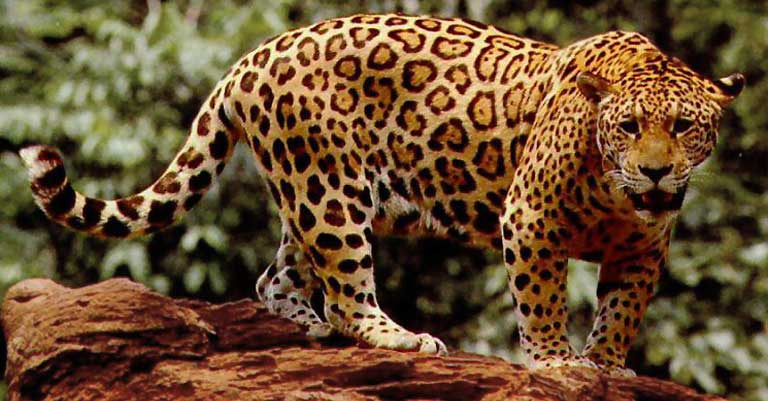
American tiger
While likely thousands of Latin American species are endangered by the widening net of the international poaching epidemic, this analysis looks at just a few of the most familiar Amazonian species being targeted — the jaguars, parrots, spectacled bears, giant otters, and vicuñas that are now being routinely captured or slaughtered for profit.
So let’s leap in, unafraid and resolute as a great cat diving for a caiman, by looking at the trafficking status of the resident top predator of America’s rainforests: the jaguar.
Panthera onca is the largest cat native to this side of the planet and belongs to the same genus as the lion, tiger and leopard. Jaguars currently inhabit 18 Latin American countries from Mexico to Argentina, and they even make occasional forays into the sky islands of the southwestern United States; their former range included South Texas, southwest New Mexico, much of Arizona and parts of southern California.
Jaguars, like all apex predators — except humans — are remarkably sensitive to disturbances to their habitat. Population growth, clear-cutting, resource extraction, road building and poaching have already eradicated these felids from 40 percent of their historic range. Listed by the International Union for the Conservation of Nature (IUCN) as Near Threatened, there are approximately 150,000 jaguars left roaming the wild — which means there’s still time to make informed conservation decisions.
With a chunky head and formidable body spanning five to six feet (not including a three-foot tail) and weighing up to 350 pounds, the jaguar’s diet is remarkably diverse, with 85 species of prey recorded. It is this capacity for omnivorous adaptation, a necessity in an environment largely lacking the vast herds of ungulates that sustain its Old World kin, that has some conservationists pointing to the jaguar as an ideal candidate for successful human/wildlife coexistence.
Dr. Alan Rabinowitz is CEO of the advocacy group Panthera. He believes that the relative intactness of much of the jaguar’s remaining habitat, and the low level of human intrusion compared to Africa and Asia, means that the jaguar might serve as a kind of poster child for the long-term retention of megafaunal predators in Latin America.

“The fact that jaguars have been more resilient and, in many ways, more lucky in their survival than other big cats is exactly why we should focus our attention and conservation efforts on them,” Rabinowitz says. “This could be the world’s greatest success story for large carnivore conservation, and show how big predators such as these can indeed live with humans.” Panthera’s Jaguar Corridor Initiative spans the entire extant range of these big cats, and works with representative governments, businesses and communities to protect critical habitat for the sustained genetic transfer needed by the species to remain reproductively robust.
While habitat fragmentation, conflicts with cattle ranchers, and the hunting of the jaguar’s prey to fuel the exploding trade in bushmeat, are the primary challenges facing the species today, another ominous threat lurks just over the horizon: trafficking.
Brazilian and U.S. law enforcement have confiscated illegally traded jaguar teeth and skulls. But the big concern is the increasing Chinese involvement in the region. Chinese companies are constructing dams and power lines, building roads, and logging, activities that all open remote areas and tend to accelerate traffic in wildlife and wildlife products.
Groundless belief in the healing properties of large cat bones, especially popular with China’s newly wealthy, has decimated tiger populations across Asia and helped deplete Africa’s lions by 42 percent in only 21 years. With the money to be made, conservationists fear that it will only be a matter of time before Asia’s rapacious markets reach out to Latin America to rob the world of yet another of its irreplaceable big cats. Chinese markets have already devastated Latin America’s sharks (for shark fin soup), sea cucumbers and totoaba (whose fish bladders are another Asian “delicacy”).
No large scale jaguar traffickers have been detected or arrested to date in Latin America, but disturbing anecdotal, and still unsubstantiated stories — some originating in Bolivia — have been told to reporters working on this Latin American Wildlife Trafficking Series for Mongabay. Those tales tell of jaguar parts bound for China.

Emptied nests
While the jaguar may go relatively unmolested for the moment, there is no such shortage of trafficking evidence in regard to Latin America’s avian species. The international pet trade is one of the world’s most loosely regulated and ecologically damaging industries, draining habitats worldwide of turtles, monkeys, tropical fish, and especially birds.
One of the most targeted wildlife families is the Psittacidae, the lovely and notoriously intelligent parrot family, represented in Latin America by species ranging from budgie-sized conures to the great radiant macaws that outlive us in the wild and that are rapaciously sought by collectors.
In 2012, Interpol announced the conclusion of “Operation Cage,” a massive targeting of illegal bird and egg sales in Latin America and Europe. More than 8,700 birds and other animals were seized and nearly 4,000 people arrested at docks, airports, open-air markets, pet stores and taxidermy shops.
Operation Cage had been launched in response to the growing illegal trade in wild birds and eggs, and the increasing involvement of criminal networks in their transit from Latin America to Europe, a tremendously profitable racket.
Latin America’s brightly plumaged macaw species are a prime target of the black market trade. Of its 19 species of macaw — typically the priciest parrots being trafficked — the IUCN lists only eight with fairly stable populations. The rest range from Near Threatened (one species) to Vulnerable (three), Endangered (three) to Critically Endangered (three). For the Cuban macaw, it’s already too late.
The macaws are threatened by the standard human pressures, including habitat loss and development. Intensified trafficking — which especially focuses on “squabs,” baby birds plucked from nests — could serve as a tipping point for some of these species that pushes them over the brink to extinction.

Amazonia’s treehugger
Poaching is a serious threat throughout the extensive range of the Andean or spectacled bear — an animal already endangered by logging, mining, hydroelectric development and human settlement. The last surviving member of the short-faced bear subfamily (Tremarctinae), the spectacled bear is almost purely vegan, with only around seven percent of nutrient intake being meat, and it shares with the panda a tooth structure and mandibular musculature that allows it to dine on tough fibrous plants.
Along with the black bears of America and Asia, it is also the most arboreal bear species, and upon encountering humans will quickly scale the nearest tall tree to avoid conflict.
This behavior allowed it to flourish among Amazonian bowmen, but is woefully inadequate to protect against today’s rifles, snares and poisons. Spectacled bears are targeted for raiding cornfields and for allegedly (doubtfully) killing livestock.
Now spectacled bears are being targeted for local, and increasingly, foreign markets. Bear products, including their gall bladders, are used for pseudo-medicinal or ritual purposes; live bears are also captured and sold to shoddy roadside zoos throughout Latin America to entertain tourists and for private display. The species is IUCN listed as Vulnerable.
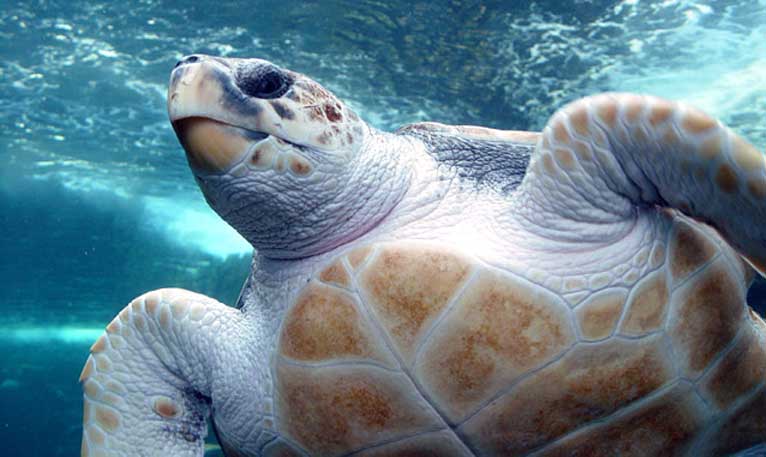
Fatal attractiveness
Tortoiseshell is a prized luxury commodity and has been since classical times. The subtly mottled scutes, or the armored plating of the hawksbill sea turtle’s shell, for example, were carefully carved into combs, boxes, frames, inlays and veneers by the Greeks and Romans — Caesar felt the vast tortoiseshell stockpiles of ancient Alexandria to be his chief gain from conquering Ptolemaic Egypt.
Little has changed regarding the human hunger for turtles and tortoises since. In the last century, for example, tens of millions of loggerhead sea turtles were butchered for their shells and meat in Latin America and elsewhere. And even though trade in Eretmochelys imbricata was prohibited by the CITES treaty in 1977, trafficking continued: 29 Caribbean and Latin American countries provided 44.2 percent of loggerhead shells — that’s 460,220 turtles — to the Japanese bekko artisanal industry between 1950 and 1992.
Despite international law, loggerhead trafficking still plagues Latin America today, in what the IUCN terms an “extensive clandestine trade” facilitated by “management and law enforcement [being] inadequate throughout the region.” For loggerheads, illegal harvest of eggs for both food and trafficking often approaches 100 percent.
While the recent diplomatic reset with Cuba could build on the steep reduction in loggerhead take there since the 1990s, which has spared tens of thousands of turtles from the bekko industry, this hopeful glimmer is an exception in a world in which loggerhead populations have sunk over 80 percent in three generations.
Illegal Latin American trafficking in tortoiseshell, meat and eggs extends far beyond the loggerhead example, however, to many of the aquatic and terrestrial chelonians of Latin America, such as the Critically Endangered Central American River Turtle, or hicatee of Belize. Add to those woes the attractiveness of many turtles to the voracious pet trade of Europe and the United States.
The pantropical loggerhead, a strangely beatific reptile with broad speckled wings, a shy smile and wide, curious eyes, hovers closer to the edge of the abyss than any other animal reviewed in this article, with an IUCN ranking of Critically Endangered.

The river wolf
Although widely distributed in South America, the giant river otter (Pteronura brasiliensis) may occupy less than one percent of any given watershed, so that even very localized changes in its intensively specific habitat will have severe effects. An apex predator, it predominantly hunts fish — mostly cichlids and characins, including piranhas — but also crustaceans, small caimans and anacondas.
At five-and-a-half feet long (excluding two-foot tail) and upwards of 70 pounds, adult giant river otters have no natural enemies other than, yes, us.
Trappers will tell you that among the animals live-caught in the eastern U.S. —groundhogs, raccoons, possums, muskrats — the river otter (Lontra canadensis) is by far the craftiest, and most capable at picking simple locks and shinnying out of cages within minutes of capture. When menaced, these sinuous swimmers are also said to offer the most impressive self-defense, using their ropy strength and gnashing teeth to full effect. Imagine then the response of a trapped otter that’s five-and-a-half feet long.
Unusual among the Mustelidae, the weasel family, the giant otter is fairly vocal, especially when demarking territory or challenging a caiman for prime fishing grounds. Known locally as the “river wolf,” the giant otter’s high-pitched, gasping squeak is fading away throughout its range in the face of dam building, toxic mine runoff, and poaching by traffickers. A single pelt, sold on the black market, can earn a poor Amazon fisherman a whole year’s wages, which helps explain why it is IUCN listed as Endangered.
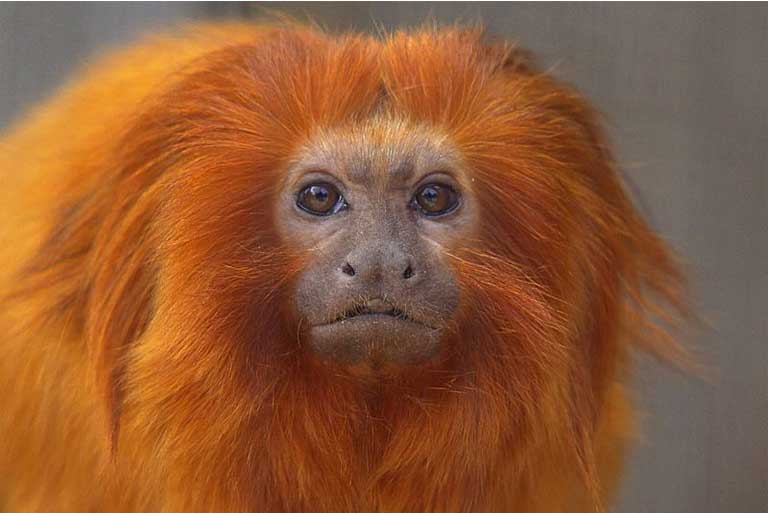
The beloved captive
Now for some of the lesser-known mammals of Latin America which are suffering from the attention of traffickers. The golden lion tamarin (Leontopithecus rosalia), a coppery little monkey native to Brazil’s fast-disappearing Atlantic lowland forests, is too cute for its own good — and is very attractive to the pet trade.
Omnivores like us, they enjoy fruits, flowers, nectar and small animal prey such as frogs, snails, lizards, spiders and insects. Ten inches tall, with chunky ones weighing only a pound and a half, the squirrel-sized golden lion tamarin sports a thick reddish mane and lives in extended families of four to eight.
Latin Americans, both rural and urban, have a long tradition of displaying imprisoned wildlife in their homes, not so much as pets but as living trophies. The commonplace capturing for home exhibit of what Brazilians call xerimbabos, “something beloved”, can encompass species ranging from monkeys to turtles, anteaters to tropical birds, and even pacaranas (Dinomys branickii) — a rare oversized rodent — caged for life.
With their antic charm, small monkeys like the golden lion tamarin have long been targeted for the wildlife trade. New roads bulldozed through the forests to expedite logging and mining interests serve as the ideal means for invading pristine areas, facilitating the trapping of their wild inhabitants, and the trucking of the living loot back to Latin American cities.
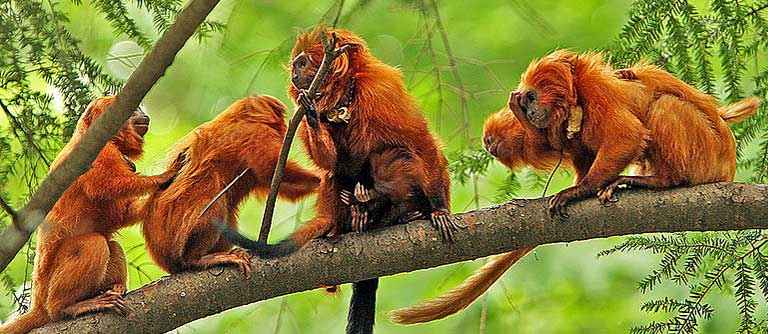
Golden lion tamarin populations in some areas are improving, mainly due to a rare instance in which captive-bred animals are successfully returned to the wild (currently, one third of all wild tamarins were bred in captivity). But serious threats are accelerating, chiefly due to the fragmentation and destruction of viable habitat.
Brazil’s coastal state of Rio de Janeiro is the country’s most heavily populated, and clear-cutting for crops, charcoal production, ranching and urbanization have left the golden lion tamarin with a few meager footholds. The IUCN reports that, “Approximately 20 percent of the original range of L. rosalia is still forested, but 60 percent of this total is comprised of patches of 1,000 hectares [2,471 acres] or less, 96 percent of which are less than 100 hectares [247 acres].”
If these disconnected microhabitats — which are sufficient to temporarily sustain, though not to expand the species — vanish like the rest of the supremely endangered coastal lowland forest, the temporary gains of captive breeding will have been for nothing. Which poses the existential question: what good is a resuscitated species if its only life fulfillment is reproduction behind bars as xerimbabos, “something beloved”?
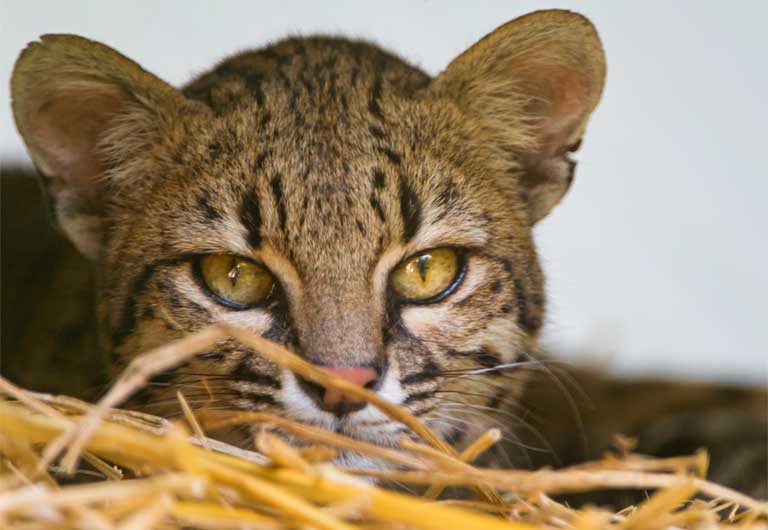
Born free
The oncilla or little spotted cat (Leopardus tigrinus) is one of those smaller wild felids that have been shoved aside in public perception by its bigger brothers, the jaguar, lion, tiger and leopard. But the secretive oncilla is suffering at the hands of man as well.
The oncilla is closely related to the ocelot and margay, themselves little known in the U.S. but which together form the backbone of small-to-medium scale natural predation in Latin America. Two feet long with a one-and-a-half-foot tail, and weighing a scant six-and-a-half pounds, the wiry oncilla is essentially the size of a very muscular, beautifully spotted housecat. But rather than being an introduced exotic species and pet which annually kills an estimated 12.3 billion small mammals, 2.4 billion birds and 650 million reptiles and amphibians in the US every year, the oncilla is a native American felid which hunts insects, small rodents, birds and lizards, and is itself prey for bigger cats — it exists in harmony and balance within its ecosystem.
Following the erasure of easily accessible ocelots for the fur trade a few decades ago, the oncilla became — in the deadly trickledown logic of wildlife traffickers — the new quarry, causing its populations to drop sharply. While CITES and other international agreements have largely checked the export of oncillas, there is a less manageable side to trafficking: the domestic trade.
The nullifying xerimbabos effect, which preys on exotic wildlife in order to shore up one’s social standing, once again rears its head as a driver of trafficking. Wild oncilla kittens — chained or caged, constantly pacing — are relatively common at shoddy zoos, tourist stops, and in residences across Latin America. IUCN status: Vulnerable.
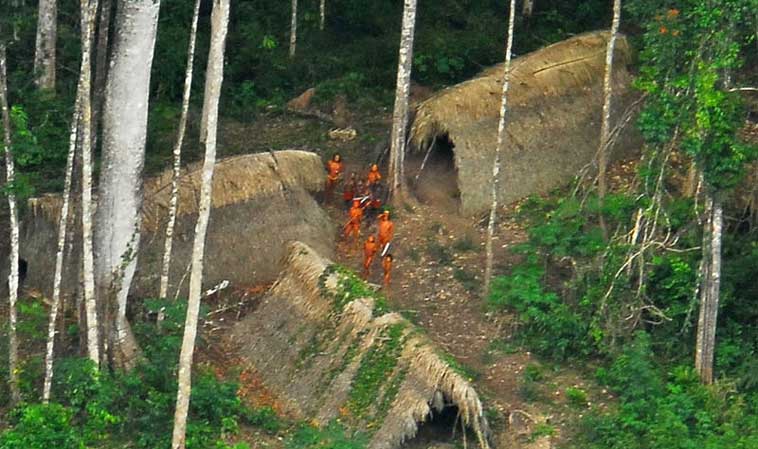
The human cost of wildlife trafficking
The Upper Amazon basin and Andean foothills include vast intact tropical forests and thousands of miles of waterway that hold unmatched levels of biodiversity, which puts them at the heart of Latin America’s poaching war on wildlife.
These remote areas are also home to some of the world’s last uncontacted peoples, whose cultural survival is threatened by the same infrastructural incursions that expedite poaching. These indigenous people are also fast becoming pawns and human casualties in the wildlife trafficking crisis.
In certain cases, as in parts of Brazil, indigenous tribes are fighting back, sometimes violently, against the loggers, plantation farmers, oil surveyors and poachers who are destroying the balanced relationship with nature that has allowed them to live in relative harmony with their environment.
For the native peoples whose cultures have drawn on local wildlife for sustenance and spirituality for ages, the outcome of the trafficking calamity in Latin America is a matter of cultural life and death — including the loss of the freedom to make independent decisions regarding the degree of interaction they wish to have with modern society.
One of the tragedies of the trafficking crisis is that it often makes use of indigenous people as the collectors of wild animals. The process is one of cascading effects: oil companies bring roads to the rainforests, often along with gifts of outboard motors, all-terrain vehicles, modern hunting rifles, and ammunition to gain access to tribal lands, Those roads and gifts draw tribal people inexorably into modern society and the illegal trade.
Former hunter-gatherers frequently move closer to the new roads, and become dependent on distant cities, processed food, and other modern amenities. Needing gasoline for their motorized canoes and ATVs, and ammo for their weapons, they now hunt not for self-sufficiency, but to capture wildlife to sell to traffickers and pay for goods. Their modern means of transport, guns and ammo, replace foot travel and bow-and-arrow, putting wildlife at a huge disadvantage — these modern hunting practices are unsustainable and drain the rainforests of wildlife.
Thus, indigenous people become the willing but unwitting accomplices to the domestic and international wildlife trade, which if unchecked, will destroy their traditional lifestyles forever.

Ephemeral creatures in a primal landscape
The Andean foothills and Amazon River basin still cover thousands of square miles of intact habitat — stretching from the montane cloud forests once governed by the Inca, the last urbanized American empire to fall to the Spanish, down toward the modern hyper-industrialized Atlantic coast.
The creatures described here are only a few of the many being hunted, poisoned, butchered, caged and trafficked throughout this unparalleled region of the wild world —a continental mountains-to-the-sea explosion of life evolved specifically to survive in this biologically luxuriant landscape.
There are a few — not many, but a few — glimmering spots of hope on the horizon for Amazonia’s beleaguered animals. Just last month, Brazil signed onto the UN-led Convention on Migratory Species, joining 121 other countries in what “is increasingly being recognized as an important global forum to promote the conservation of threatened migratory species including many iconic animals.”
International organizations like the World Wildlife Foundation, TRAFFIC and the Wildlife Conservation Society along with local groups like Freeland Brasil are working to reduce wildlife trafficking from the Amazon to the Andes. And just a few days ago, Peru announced the creation of the Sierra del Divisor National Park, a 3.3 million acre “Yellowstone of the Amazon” that, if afforded meaningful long-term protection, promises to serve as an invaluable reservoir for both wildlife and native peoples, and a vital hedge against exploitation by traffickers.
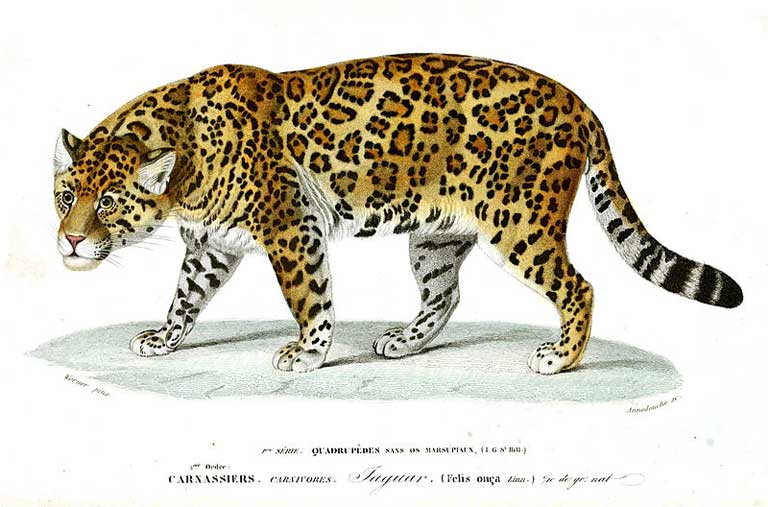
In another very recent development, this time here in the U.S., Congress commendably passed the Global Anti-Poaching Act (HR 2494), which while currently limited to supporting conservation efforts in Africa, equates the crime of wildlife trafficking with those of running guns and narcotics.
U.S. relations with some Latin American countries that had lately become strained are on the mend, while their governments and people are increasingly challenging the authoritarian assumptions of state-owned Chinese extractive corporations, and the wildlife trade that their dealings in Latin America sometimes bring. A recent poll by the Pew Research Center found that 86 percent of Brazilians describe themselves as being “very concerned” about climate change” … the highest ratio in the world. If that level of awareness and concern is transferred to the continent’s disappearing animals, all is not lost.
But there is much to do, and it must be done quickly, if Latin America’s animals are to be protected.
Wildlife agencies across the governmental spectrum are notoriously underfunded, understaffed and underappreciated — overwhelmed by the vast commerce of global markets. But these enforcers are the people on the front lines of the trafficking wars.
If we’re serious about putting an end to the horrific toll of wildlife poaching, then institutions like the USFWS and their counterparts in Latin American countries, need an aggressive restructuring of their funding allotments, with a substantial hiring campaign mirroring that of the U.S. Border Patrol, along with the establishment of additional checkpoints at points of exit and entry, and the training and deployment of sniffer dogs and other effective anti-trafficking methods.
Amazonia’s unique wildlife is both a natural and cultural heritage, a ubiquitous component of national identity the loss of which would make a barren biological desert of one of the Earth’s most verdant and essential tropical ecosystems.
All of the creatures highlighted here – along with thousands more — are in dire need of attention and action. Each and every one plays a vital role in the way their part of the natural world works; each deserves, in the fullest sense, to play their unique role in the great river of life flowing from the Andes eastward, through the Amazon basin, to the sea.
